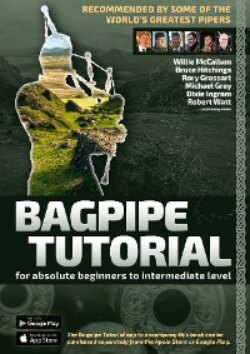Читать книгу Bagpipe Tutorial - Recommended by the best pipers in the world - Andreas Hambsch - Страница 6
ОглавлениеDescription of the book
What you’ll need in addition to this book
1) An A4-sized music book with empty staffs (note lines). You’ll write your exercises in your music book and especially the tunes you’ll learn, because physically writing them down is really an enormous help for the learning process.
2) During your first year of learning, you’ll also need a practice chanter. You can find one in any specialised shop for bagpipes and accessories. The staff there will be able to give you the special advice you need. If you have a tutor, ask him or her to recommend a practice chanter and accessories.
You’ll learn the first fingerings and tunes on your practice chanter and after around 8-16 months (depending on the time you spend on the exercises), you’ll have reached lesson 21. Then it will be time for you to transfer what you’ve learned on your chanter to the “big” bagpipes – but the practice chanter will always accompany you when you’re learning fingering exercises and new tunes.
The Structure of the Book
Bagpipe music has melody notes (they’re the big notes, which represent the melody of the tune) and grace notes (the small notes), which “grace” or embellish the melody. With this method and twenty-eight lessons, this book is structured in such a way that you can absorb and memorise the melody and grace notes systematically and successfully.
The Bagpipe Tutorial App contains the acoustic and visual versions of all the exercises in this book, plus all tunes played at different speeds. You can download the app in your app store.
Each lesson in the book will bring you one step closer to your goal of becoming a good piper. Work through the lessons conscientiously – only start the next one if you’re sure you’ve mastered the previous lesson’s exercises and can play them correctly.
By the time you’ve finished with this book, you’ll have learned twenty-two bagpipe tunes (yes, twenty-two!) with all their grace notes. But keep working on your fingering technique every day – and expand your repertoire using sheet music that you can buy in your bagpipe shop.
This textbook is suitable for studying without a teacher, but it’s also the ideal companion book if you are taking private lessons.
In Lesson 28 you’ll find a summary of all the exercises in the chapters, plus the embellishments of classical music (Piobaireachd).
